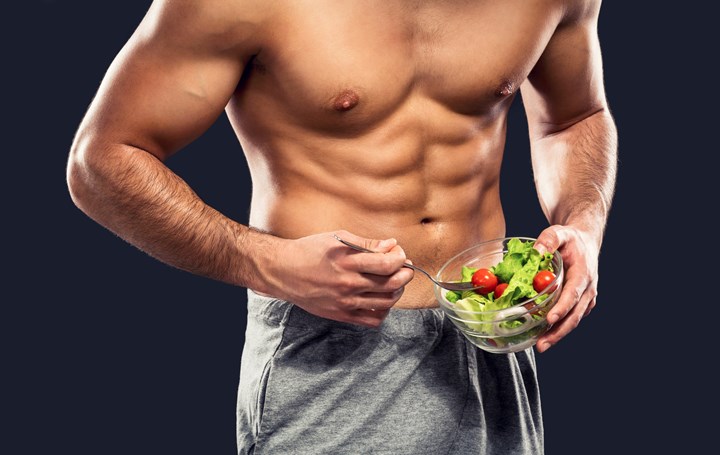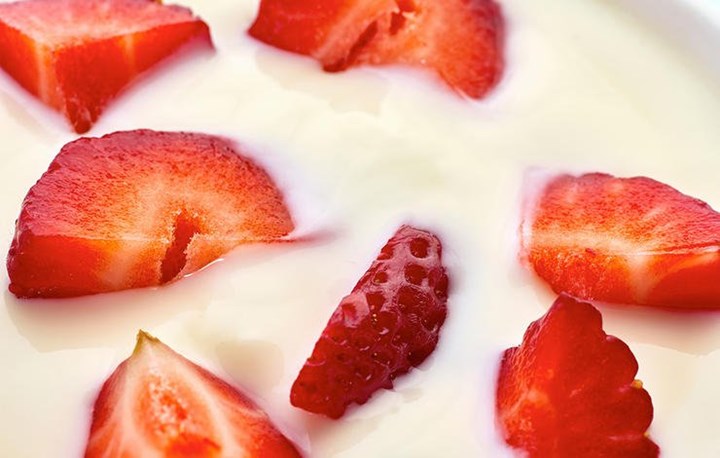
You’re sitting in a booth at a fast-food chicken joint. You unwrap the crunchy paper to unveil a squishy bun hugging a warm breast of fried chicken.
RELATED: here’s what a men’s physique champion eats each day
Pop music plays above. The aroma of crisped fat intensifies. You take a bite.
It’s not nearly as juicy as the ad made it look. But you eat. And probably eat more than you should, as if compelled by outside forces.
The truth is, those forces – from the texture of the wrapping to the lightness of the bun to the blaring music – are intentional.
Scientists have long known that much of what you “taste” when you’re eating isn’t about your palate. A new branch of research is proving the assumption that all of your senses are at play when you eat.
To experience these findings first-hand, I paid a visit to Dr. Charles Spence, director of the University of Oxford’s Crossmodal Research Laboratory in London.
Spence has popularised the term “gastrophysics” to refer to the science behind brain-belly communication. He guided me through a meal with each course designed to manipulate one of my senses.
Here’s what I learned…
RELATED: 5 “superfoods” that don’t live up to their promises
How Sight Makes You Fat:
My first course was entirely white.
Four appetisers sat atop an ivory platter: a snowy ball, cloudlike cotton candy, colourless globules and a triangular chip. With Spence looking on, I was told to eat them in order from sour to salty to bitter to sweet.
I went for the chip.
Spence asked why. I told him the topping looked like it was pickled, so it might be sour. Spence suggested that there could be something else going on.
Sweetness is typically associated with round shapes (think chocolate chip cookies). Hard, angled edges (lemon wedges) communicate sourness and bitterness. Spence explained that there’s truth to the adage “we eat with our eyes”. When our food loses colour, our brain loses context.
YOUR MOVE
1/ Shut Out the Neon
Spence’s research suggests that people are so compelled by colour that they trick themselves into tasting what they see. In an experiment he reviewed, for example, many tasters deemed a cherry-flavoured soft drink citrusy because it had a vibrant orange colour. By avoiding processed foods in any hue not found in nature, you can cut down on junk.
2/ Look Past the Package
People tend to believe that a product in matte packaging is healthier than one in a glossy container, according to Spence. The nutrition facts are what matter: always check them when you’re shopping for food.
3/ Swap Your Dishes
Try eating out of a small bowl instead of a big plate. The rim of a plate may fool you into thinking there’s less food than there really is, Spence says. A bowl, especially filled to the top, gives the impression of abundance, possibly leading you to eat less.
How Smell Makes You Fat
Back in 2000, in his research on iced tea for a food company, Spence made an interesting discovery: when people opened a bottle of iced tea, they thought it smelled evocative. But when they drank the tea, the flavour was far more subdued, disappointing them. Your brain doesn’t like having its predictions proved wrong, he says. One way to fix the conflict between smell and taste: add sugar. That way the tongue experiences the level of flavour it had expected based on scent.
YOUR MOVE
1/ Pick Plain
Choose regular, no-fruit-on-the- bottom yoghurt to cut added sugar. Then add your own berries. Incorporate something that makes you chew longer, like nuts, to help reduce your overall kilojoule intake, says Spence.
2/ Watch the Booze
You know beer goggles are a thing, but beer schnozzes? People under the influence of alcohol tend to eat more, the journal Obesity reports. Alcohol can sensitise the brain to food aromas, inciting us to eat when we’re not hungry and to overeat. Order your drink with your meal, not before.
3/ Lose the Idea of Scent
In 2015, researchers studied a marketing tactic called “smellizing” – that is, encouraging people to think about a product’s smell. Doing this heightened salivation rates when people looked at a picture of the product. If you think you’re being smell-teased, ask yourself: “Am I really hungry, or are other forces at work?”
How Sound Makes You Fat
My all-white appetiser led into a course of crisp seaweed spaghetti. The servers gave me a pair of headphones that emitted the sound of people chewing. The effect was amazing: the pasta seemed crunchier. Spence says this explains what happens when people pair popcorn and a movie. When the loud sounds of your environment match the crunchiness happening inside your mouth, that’s harmony. But that harmony is also what can cause you to snack mindlessly.
YOUR MOVE
1/ Focus on Chewing
Try eating a crisp, fresh salad without distractions. The simple sound of chewing will intensify your satisfaction.
2/ Tune Your Fork
Fast-food joints play upbeat music for a reason. People tend to synchronise their chewing to the beat, says Spence. Here’s yet another reason to cook at home: playing slower-paced music can help you chew slower and eat less overall.
How Touch Makes You Fat
One of the night’s final courses involved whiskey poured into two glasses. The first glass was thick and wide-rimmed. The second was smaller and lighter. My sip from the heavier glass tasted more alcoholic and more pungent. According to Spence, heavy weight conveys bitterness and masculinity. The whiskey from the smaller glass tasted sweeter and more intense. Both drinks were Chivas 12.
In a similar experiment, people were served yoghurt in two bowls that looked the same but differed in weight. They were asked to hold each bowl while deciding which yoghurt might keep them fuller. The heaviest bowl rated higher. The brain associates heft with tastiness. The inverse may also hold true: when your fast food arrives in lightweight paper, you’re being led to lower your expectations.
YOUR MOVE
1/ Buy Heavy Cutlery
Using a heftier knife and fork has been shown to make people rate food as higher in quality than, say, a meal served with plastic utensils.
2/ Cup Your Meal
Eating cereal? Hold the bowl in your hands when you eat. Feeling the weight has been shown to make you feel fuller faster, since you attribute the heavy feeling to a richer meal.
3/ Eat Slow Food
In a Singaporean study, people ate six times more quickly when their food was the “fast” variety (like a smoothie) than when it was “slow” (something that’s chewed). What’s more, these fast-food eaters ingested 10-30 per cent more kilojoules than the slow-food eaters.
After the meal…
As the plates were being stacked, Spence said something that stuck with me. “If I had to rank the senses in order of importance for eating, I’d choose sight and smell as most important,” he said. “Then sound and touch. Last is taste.”
Knowing the different ways restaurants and food producers manipulate your senses is your first step toward smarter eating.
But it’s in leveraging gastrophysics that you start to tip the scale to your advantage.















